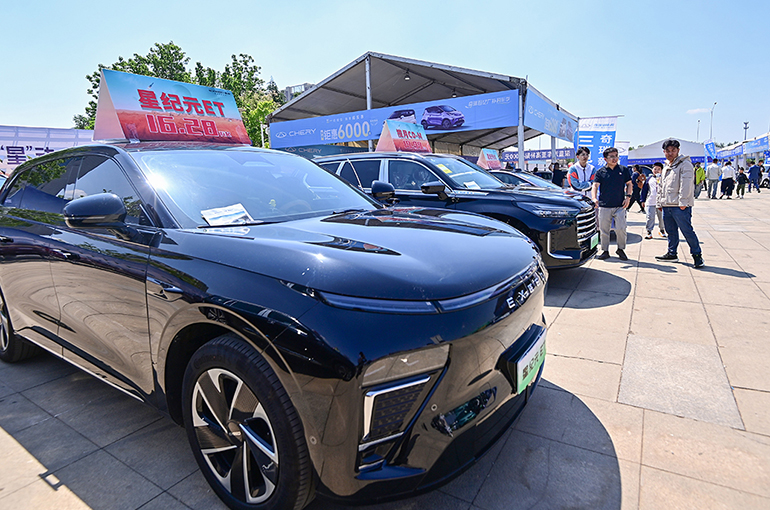 Many Chinese Local Gov’ts End Car Trade-In Subsidies as NEV Sector Shifts to Market-Led Phase
Many Chinese Local Gov’ts End Car Trade-In Subsidies as NEV Sector Shifts to Market-Led Phase(Yicai) Oct. 29 -- Several provinces and cities across China have suspended their car trade-in subsidy programs. Along with the government's recently announced move to reduce the full purchase tax exemption for new energy vehicles to 50 percent, this signals the end of China’s ‘policy-driven’ era for NEVs and the beginning of a market-driven stage.
Shenzhen will stop implementing its car trade-in subsidy program as the funds allocated for 2025 have already reached their budget ceiling, the Commerce Bureau of Shenzhen Municipality said yesterday, shortly after the hi-tech hub announced the final qualifications for the scheme. The program was part of a broader plan that used ultra-long-term special treasury bonds to encourage consumers to trade in old products for new ones, including vehicles.
Individual consumers who sell their old vehicles and purchase a new NEV or gasoline-powered auto that meets the China VI emission standards within the city could receive a one-time subsidy, according to Shenzhen’s original plan.
For vehicles priced between CNY150,000 (USD21,090) and CNY250,000, buyers could get a CNY12,000 (USD1,700) subsidy per fossil fuel-powered vehicle and CNY13,000 for each electric car. For vehicles priced over CNY250,000, the subsidies increased to CNY13,000 and CNY15,000 respectively.
Many regions in China, including Hunan, Henan, Anhui, Jiangsu, Sichuan, Guizhou and Shanxi provinces as well as the municipality of Chongqing, have paused similar car trade-in subsidy schemes, public data shows.
China’s decade-long policy of fully exempting NEVs from vehicle purchase tax will shift to a new model of offering a 50 percent reduction from Jan. 1 next year, the government said recently.
These policy shifts point to a gradual pullback of government support for the NEV industry, and that the sector is about to enter a more market-driven stage.
Editor: Kim Taylor